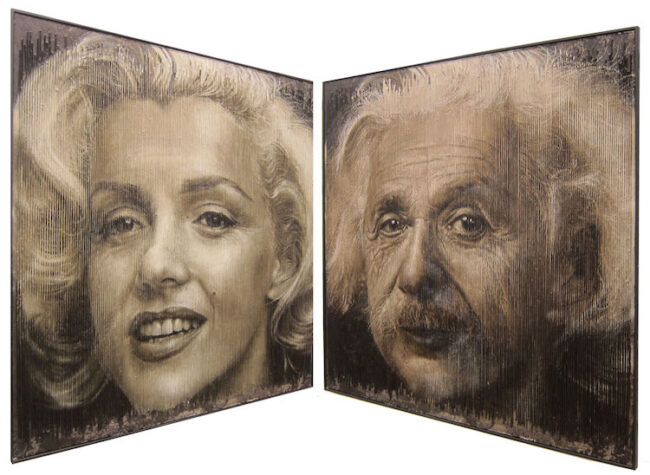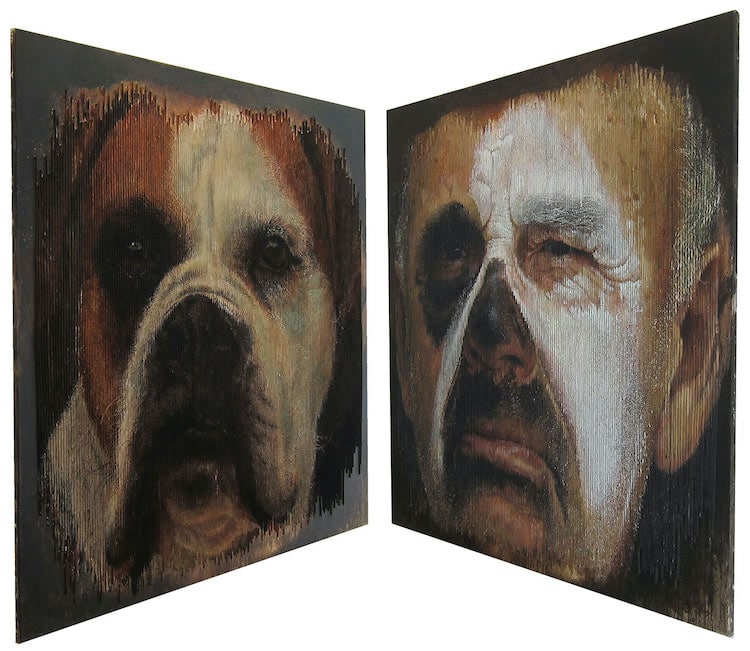Among the most captivating forms of art is optical art, a craft that employs different techniques to trick the eye. Spanish artist Sergi Cadenas has constructed his own technique to create the illusion that the subjects of his portraits morph into other people. As audiences look at Cadenas’ three-dimensional oil paintings from different angles, they will slowly see one image transform into another. Although a magician never reveals their secrets, Cadenas is more than willing to share the magic of his paintings. By using a pastry piping bag, Cadenas pipes nearly 200 thick stripes of painter’s paste onto his canvas with 45-degree angles. After letting the paste dry for two days, Cadenas begins to sketch his portraits and proceeds to paint two separate images on either side of the raised lines. While Cadenas was inspired by flipbooks from childhood, the idea for his technique came from his neighbour who is a pastry chef.
It takes Cadenas a month or so to complete his hypnotizing portraits, and the finished results are nothing short of magnificent. The transition between one portrait to the next is so smooth and seamless that it takes careful concentration to see the changes in action. From Marilyn Monroe to Albert Einstein, a young girl to an old woman, and a dog to a human, Cadenas can blend any image. The duality of his art reflects the duality of life. With themes that highlight life and death, opposing emotions, and racial differences, Cadenas’ art puts a spotlight on the complexity of life and invites conversations about embracing our differences.













